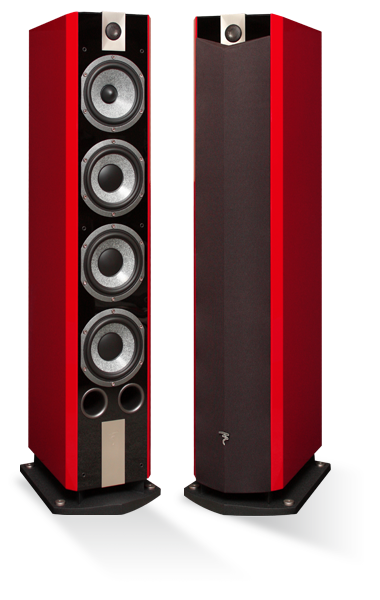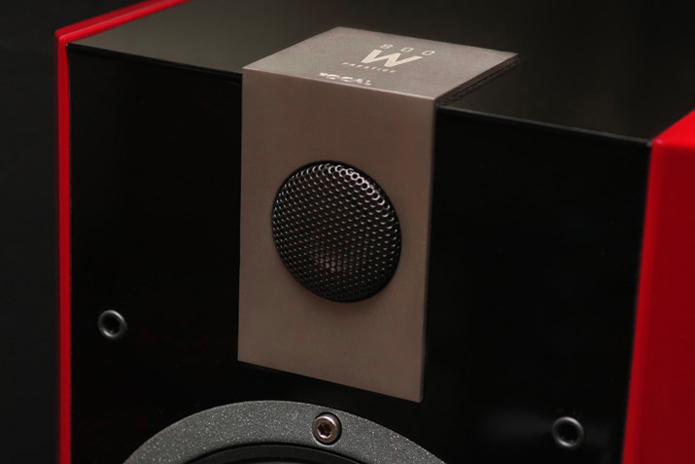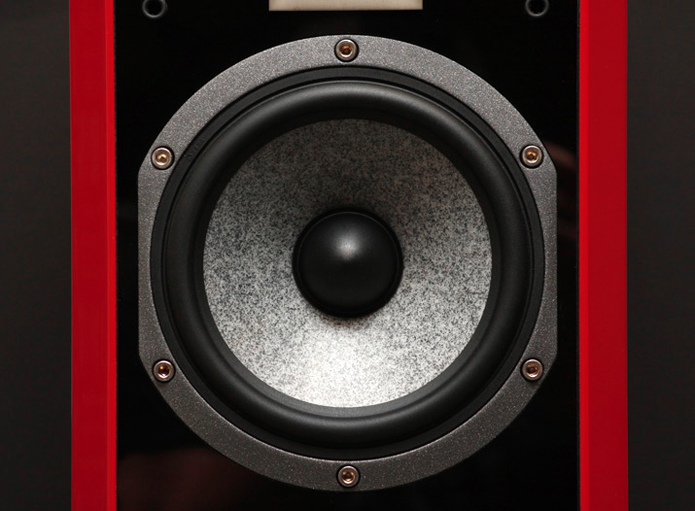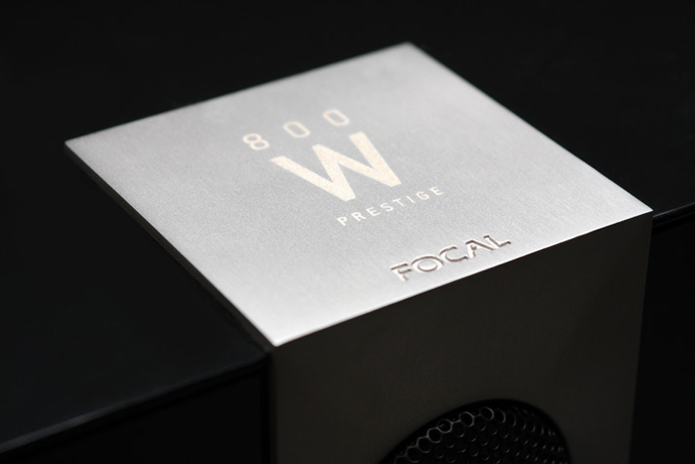Note: Measurements taken in the anechoic chamber at Canada's National Research Council can be found through this link.
 Recently, the Quebec-based arm of the government-funded Canadian Broadcasting Corporation got itself in trouble by streaming, on one of their websites, the TV show Hard, a French production that many Canadians deemed too sexual in nature even for the Net, no matter that it was aired at 4 a.m. The blunder embarrassed the bumbling bureaucrats in Canada’s capital, Ottawa; after all, it was the taxpayers who’d footed the bill.
Recently, the Quebec-based arm of the government-funded Canadian Broadcasting Corporation got itself in trouble by streaming, on one of their websites, the TV show Hard, a French production that many Canadians deemed too sexual in nature even for the Net, no matter that it was aired at 4 a.m. The blunder embarrassed the bumbling bureaucrats in Canada’s capital, Ottawa; after all, it was the taxpayers who’d footed the bill.
But as I watched the TV news story about the scandal, which included eye-opening, arousing images from Hard, I couldn’t help thinking about the Focal Chorus 836 W Prestige loudspeakers in my listening room. A number of people have described their bold red finish as sexy, a word rarely applied to hi-fi. The Chorus 836 W Prestige, too, comes from France. No question about it -- the French know how to spice things up.
Description
The 836 W is the largest and most expensive ($4499 USD per pair) entry in Focal’s Chorus 800 W Prestige line, a relatively new series of speakers that combines the shape of the lower-priced Chorus V series with some elements of Focal’s top models, the Utopias. The smallest in the line, the 807 W, is a bookshelf model ($1599/pair); fellow reviewer Philip Beaudette has a pair of 807 Ws in for review right now. Between the 807 and 836 is another floorstander, the 826 W ($3699/pair). Those who want to branch out into home theater can consider the CC800 W center-channel ($899) and the SW 800 powered subwoofer ($1599).
All of the Chorus 800 W Prestige models share the same design ideals and many of the same parts. The 836 W measures about 45.25”H x 11.125”W x 14.75”D and weighs just over 65 pounds. It’s a three-way design comprising a 1” TNV Al/Mg inverted-dome tweeter, a 6.5” midrange driver, and three 6.5” woofers. All drivers are made in-house by Focal. The crossover points are said to be 250Hz and 3kHz.

The TNV Al/Mg tweeter is based on Focal’s TNC tweeter, their first with a diaphragm made of aluminum and magnesium, as its name indicates. The TNV has a new surround and motor system, which Focal claims results in three times less distortion than the TNC design at 1kHz, and six times less at 500Hz.
The midrange and woofer cones are made of a material that Focal calls W, trickled down from the Utopia line. The lower-priced Chorus V series uses Polyglass, for years a hallmark of Focal drivers. The W cones have a foam-based core surrounded by two very thin layers of woven glass. Using these two different materials lets the designers optimize the cones’ stiffness and self-damping, the ratio of woven glass to foam changing depending on the frequencies the driver will be asked to reproduce.
The 836 W’s ports are interesting -- there are two on the front, toward the bottom of the baffle, and a third on the bottom of the cabinet. Because of this downward-firing port, it’s crucial to use the 836 W’s bolt-on metal plinth, so that the air from the port can escape. That plinth holds the large, adjustable floor spikes, which work exceptionally well on carpet, and have plastic caps for the points for resting the speakers on hardwood floors.
Focal claims for the 836 W a frequency response of 40Hz-28kHz, +/-3dB, a sensitivity of 92dB (2.83V/m), and a nominal impedance of 8 ohms (3 ohms minimum). There is a single pair of binding posts on the rear panel.
The 800 W series’ looks, the work of the Paris-based company Pineau & Le Porcher and primarily derived from the V series, are daringly distinctive. Focal describes the 836 W as having “a high-end look with a strong, modern and fashionable aesthetic.” I think of the speakers, with their grilles in place, as having a sort of Iron Man vibe. Whether or not you like what you see will mostly depend on your taste, obviously, but also on the finish chosen, along with the room the speakers will be used in.
The 836 W’s front, rear, top, and bottom panels are always finished in a glossy black, but there are options for the sloped side panels (these are shallower toward the back, giving the cabinet a slightly less boxy appearance), which are available in French Walnut Veneer, Black or White High Gloss, and my favorite, Red Carmin High Gloss. To my eyes, this red, which is similar to the hue used for the Utopia series, is not only striking but very attractive as well -- in a word, sexy. The right red will do that -- think cars and women’s lipstick. This Red Carmin probably wouldn’t be right for a traditional home setting, but neither would the White High Gloss; both require a modern décor. If that doesn’t describe your house, stick to the French Walnut or the Black High Gloss.
Under the 836 W’s bold exterior is a sturdy MDF-based cabinet with sidewalls that range from about 0.8” to 1” thick. A cutaway image supplied by Focal reveals that the midrange driver operates in its own chamber, and that the region housing the bass drivers is braced. The enclosure’s inner walls are claimed to be nonparallel, to reduce internal standing waves. When I knocked on the cabinet’s sides it seemed fairly solid, but sounded a bit hollow compared to some of the ultra-expensive speakers I’ve reviewed, for which heroic efforts are taken to make the cabinet as dead as possible. Obviously, when a designer has to stay within a certain cost budget, only so much can be done. But the overall workmanship of the review samples was very good for the price, and I liked that each 836 W was enclosed in a soft bag, with peel-off plastic protecting the gloss-black surfaces. Clearly, Focal cares that their speakers arrive at your listening room in good shape.
Sound
My 836 W review samples were brand new, so I broke them in for a time, driving them with my 13-year-old, 100Wpc Nakamichi AV-10 receiver at quite high volume levels. They were a snap to drive, and the break-in did them good. Straight out of the box, the speakers sounded lightweight and congested, particularly with voices; a few days later, the bass fleshed out and the midrange opened up. Shortly after, I hooked them to my reference system, which included the 300Wpc Bryston 4B SST2, an amp that’s overkill for these speakers in terms of power output, but its solid-state muscle did help to show what the 836 Ws could do.
Focal’s motto is “The Spirit of Sound,” and that pretty much described the 836 W’s performance. From the get-go, the 836 W exhibited a lively, punchy, spirited sound that was reasonably neutral overall, but that slightly emphasized the higher frequencies just above the presence region. If there’s too little energy in this region, a speaker can sound dull; too much and it can sound too bright with instruments, too sibilant with voices. The 836 W skillfully walked that line, sounding far from dull but never straying into being bright -- it sounded fun.
One reason this voicing worked so well may have had to do with the extreme highs (above 10kHz or so), which were very detailed but surprisingly refined -- surprising because they sounded quite unlike the somewhat bright, unruly highs produced by some older Focal speakers I’ve heard. If anything, the 836 W’s highest frequencies teetered more toward the polite than the bright -- cymbals sounded clear and detailed, but not too forward, which I liked. The top end of the acoustic guitar sounded clean and incisive, but never too tipped up or unnaturally brash -- again, a very good thing. I wouldn’t say that the 836 W’s top end was as refined as those produced by the best beryllium-based diaphragms being used in the tweeters of some of today’s topflight speakers -- Focal’s own Utopia series, for example, as well as my reference Revel Ultima Salon2s, which sell for about $22,000/pair. But the 836 W sounded at least as clean as the top-quality aluminum-dome tweeters that tend to dominate this midrange price point, and seemed a clear step up from what I used to hear from Focal’s low- and moderate-priced speakers.
To really test whether that last bit of upper-register energy would be a problem for the 836 W and make certain recordings sound bright or sibilant, I played “Rolling in the Deep,” from Adele’s 21 (16/44.1 FLAC, XL Recordings), which has emphasized highs that can get really irritating really fast. This track sounded a bit more forward through the 836 Ws than I’m used to, but only a bit, and the sound wasn’t in the least objectionable. I thoroughly enjoyed what I heard -- it had a lively, exciting feel. What most caught my attention, though, was the meat of the midrange, where voices lie. Adele’s voice sounded strikingly smooth, clean, and pure, but with a touch of richness that lent some body to it -- a richness reminiscent of tube sound.

The 836 W’s midrange impressed me as much, if not more, with male voices. All ten tracks on Leonard Cohen’s new album, Old Ideas (16/44.1 FLAC, Columbia), are really good, but the 7:35-long “Amen” is currently my favorite. It sounded extraordinarily good through the 836 Ws, partly because their touch of warmth made his voice sound wonderfully full and natural, but mostly because Cohen’s baritone never sounded too full, to the point of being chesty or overblown, as I’ve heard it sound through some speakers. Ditto for “Chelsea Hotel,” from another one of Cohen’s great recent releases, Songs from the Road (16/44.1 FLAC, Legacy), one of the best live albums I’ve heard in years. (The Blu-ray video version is stunning; in addition to the concert footage, it has a 24-bit/96kHz PCM stereo soundtrack.) “Chelsea Hotel” can sound woolly and resonant if a speaker is ill-behaved in the lower mids, whether it’s because of the drivers or serious cabinet resonances -- but through the 836 Ws it sounded very clean, with plenty of detail, along with that hint of body and weight that makes Cohen’s voice sound extremely natural.
Bruce Cockburn is another singer whose voice can sound blurred and woolly if the speaker isn’t fairly neutral and well-behaved through the midband. “Pacing the Cage,” from his The Charity of Night (16/44.1 FLAC, Rykodisc), surprised me for how rich his voice sounded, and for how detailed and how well carved out from the mix it was: center stage, starkly defined, and with excellent separation from the space around him. All told, the 836 W’s midrange reproduction was first-class, and the way it presented voices, male or female, was wonderful: It struck a perfect balance between detail and musicality, never erring too much in either direction.
The bass performance surprised me, too, but for different reasons. Just looking at this speaker -- its size, its trios of woofers and ports -- some might think it could reach down to 20Hz, a frequency whose solid reproduction qualifies a loudspeaker as a “full-range” design. I did hear very strong output at quite-high SPLs down to about 35Hz; below that, things went missing. I know because I’ve heard those same frequencies through the very large, very expensive Vivid Audio Giya G2 ($50,000/pair), as well as my current full-range reference, Revel’s Ultima Salon2 ($22,000/pair). The bottom octave was truncated. But high-SPL, low-distortion bass reproduction down to 35Hz is plenty deep for most listeners; considering the 836 W’s price of $4499/pair, it was more than respectable, given that some boutique brands hawk minimonitors that cost this much or more, but don’t go lower than 60Hz with any authority.
Most important, the bass the 836 W delivered counted -- the speaker emphasized quality over quantity. My five-year-old son loves WALL-E, a great Pixar movie with a superbly recorded soundtrack and some really deep bass. When those bass frequencies were reproduced, the 836 Ws shook the room -- without the aid of a subwoofer, center-channel, or surrounds. It was exciting for me to hear, and even more so for my son -- when those bass frequencies hit, he jumped up from his chair, shrieked, and clapped his hands with excitement. I think Pixar knows that good sound can be appreciated at any age. While the 836 W definitely wasn’t full range, its bass delivery more than impressed me.

And when it came to music, the Focal never left me wanting more bass. The drums on 21 sounded incredibly powerful and very tight. The speakers’ cabinets were somewhat noticeable here, adding a slight resonant quality when I played music very loud and the drums were hit very hard -- but given the Focals’ price, their performance was still remarkably composed. When I played “Mining for Gold” and “Misguided Angel,” the first two tracks of the Cowboy Junkies’ The Trinity Session (16/44.1 FLAC, RCA), the sound through the 836 Ws was deep, tight, and convincingly full. They couldn’t pressurize the room the way the Revels and Vivids can, but it’s important to put into perspective that those speakers cost five and ten times the 836 W’s price -- you can’t get everything in a speaker for under five grand, but what the 836 W gave was really good. Recordings such as Cockburn’s and Cohen’s sounded incredibly robust and full -- though you’d think they must have really deep bass, they actually have almost no energy near 20Hz. As a result, they sounded as rich, robust, and alive through the Focals as through my big Revels. Only a few recordings contain musical information down around 20Hz; even if the 836 Ws can’t generate the lowest octave, you’re not missing much. But if you decide you can’t live without that bottommost sound, consider a subwoofer before you consider not buying the Focals.
With every recording I’ve mentioned, the 836 Ws did a very good job of getting the sound out of the boxes -- they created a large, spacious soundfield that was essentially detached from the speaker cabinets themselves. This is vital for a convincing stereo illusion, and in contrast to those speakers whose sound is never entirely freed from their enclosures, or that produce some telltale characteristics (such as serious resonances) that consistently identify the speakers as the sources of the sound. The 836 Ws cast a wide, stable soundstage that stretched easily from speaker to speaker and a little bit beyond them, and always with impressive center fill -- the lead singers in the voice-dominated tracks mentioned above were always precisely placed in the center, without being pulled or smeared to either side.
The 836 Ws also provided soundstage depth that was decent, though not extraordinary -- which didn’t really surprise or disappoint me. For example, the choral-based soundtrack to the film The Mission (16/44.1 FLAC, Virgin) has a soundstage that’s extremely deep when I play it through the state-of-the-art Vivid Giya G2s -- it extends far past the front wall of my room. With the 836 Ws, the stage simply approached that wall. As I said, I wasn’t surprised; I’ve found that many tall, moderately priced, multi-driver speakers give you a wide, stable soundstage, but only so-so depth; they don’t necessarily image like minimonitors, whose drivers are all very close together -- or like cost-no-object speakers in which every aspect of performance has been optimized. On the other hand, unlike many of the affordable, multi-driver speakers I’ve heard -- those designed so poorly that each driver section can be heard distinctly from the others -- the 836 W’s sound got high marks for coherence: Its five drivers did a very good job of acting as if they were one.
Conclusions
Regular readers of my reviews know that I detest “me-too” products: those with no originality or flair, mere copycats of other, more original work. It’s pretty easy to make yet another me-too, three-way, five-driver floorstander -- believe it or not, there a lot of these designs, most configured quite similarly, at almost every price point. It’s not easy to bring something new to the table, and the Focal Chorus 836 W Prestige could easily have been another ho-hum five-way.
But the French seem quite capable of spicing things up, and that’s what Focal has done. First, there’s the distinctive styling and the various side-panel finishes, one of which, Red Carmin, I love for its bold good looks. Then there’s the sound, which mirrors that bold look: powerful, lively, and spirited, but with a big sound the 836 W can call its own, and refined touches that reveal the speaker’s high-end pedigree. One of those touches is that little emphasis just above the presence region, which gives the sound a bit of the life and snap that help make the music come alive. But there’s no boost in the highest frequencies -- instead, in my system, the top end sounded highly detailed and very refined, erring more to the polite than to the bright side, which most audiophiles will find a very good thing. The 836 W’s bass shelved off in my room at about 35Hz, but everything above that was reproduced with serious power and impact, and the two speakers had no trouble charging up my very large listening room. Only a real bass freak will be left wanting more. But what most impressed me about the 836 W was its rich midrange -- gorgeous and full, it wonderfully walked the fine line between musicality and detail, never crossing it to make the music sound chesty or overblown. It reminded me of speakers costing much more.
All told, Focal’s Chorus 836 W Prestige is a distinctively styled, wonderfully voiced speaker that offers plenty of performance for its price. It’s a very good deal. But if $4499/pair is still too steep for you, stay tuned for Philip Beaudette’s review of the entry-level Focal Chorus 807 W Prestige, which costs only a third as much. It will be published next month, here on SoundStage! Hi-Fi.
. . . Doug Schneider
das@soundstagenetwork.com
Associated Equipment
- Speakers -- Revel Ultima Salon2, Vivid Audio Giya G2
- Receiver/Processor -- Nakamichi AV-10, Anthem Statement D2v
- Amplifier -- Bryston 4B SST2 (stereo)
- Preamplifiers -- Simaudio Moon 350P, JE Audio VL10.1
- Digital sources -- Ayre Acoustics QB-9, Simaudio Moon Evolution 650D DAC-transport, Sony Vaio laptop, Sony PlayStation 3
- Digital interconnects -- AudioQuest Carbon USB and Diamond USB
- Analog interconnects -- Nirvana S-L, Nordost Valhalla
- Speaker cables -- Nirvana S-L
Focal Chorus 836 W Prestige Loudspeakers
Price: $4499 USD per pair.
Warranty: Five years parts and labor.
Focal-JMlab
BP 374, 108 rue de l’avenir
42353 La Talaudière Cedex
France
Phone: (+33) 4-77-43-57-00
Website: www.focal.com
North American distributors:
Audio Plus Services (US)
156 Lawrence Paquette Industrial Drive
Champlain, NY 12919
Phone: (800) 663-9352
Website: www.audioplusservices.com
Plurison (Canada)
313 Marion Street
Le Gardeur, Quebec J5Z 4W8
Phone: (866) 271-5689
Website: www.plurison.com






















